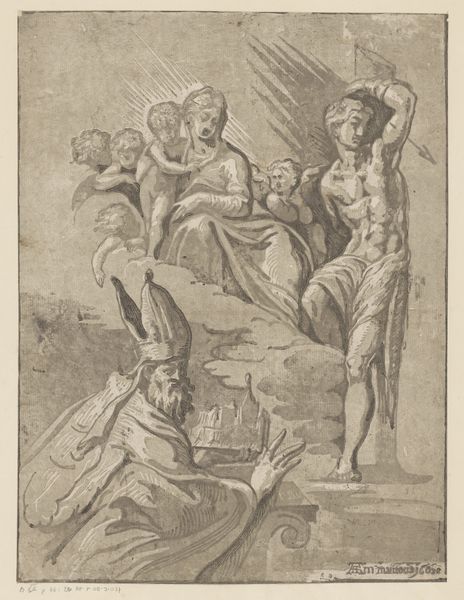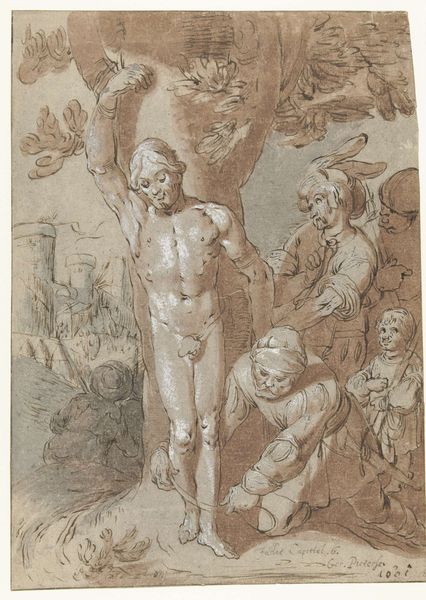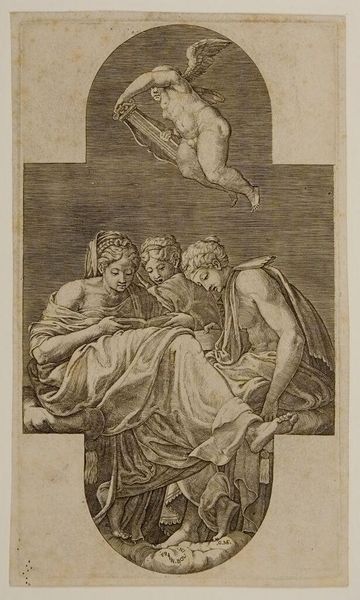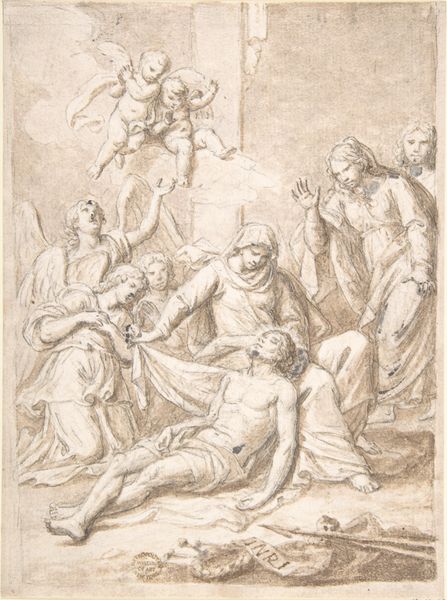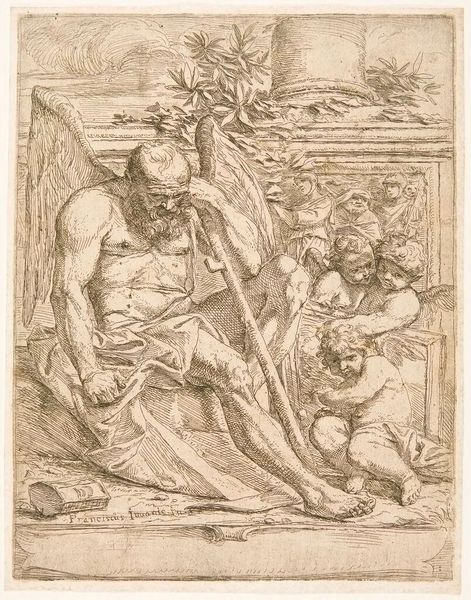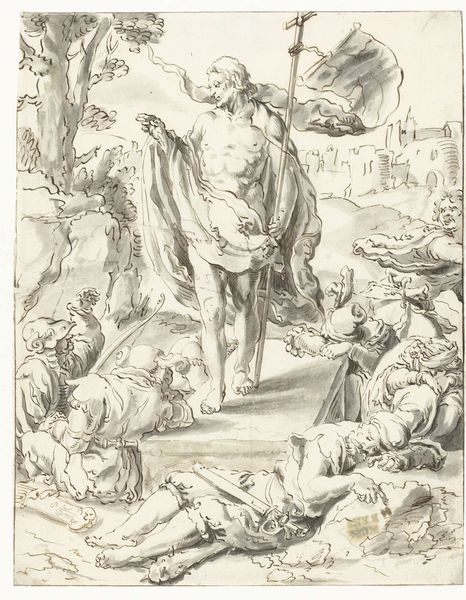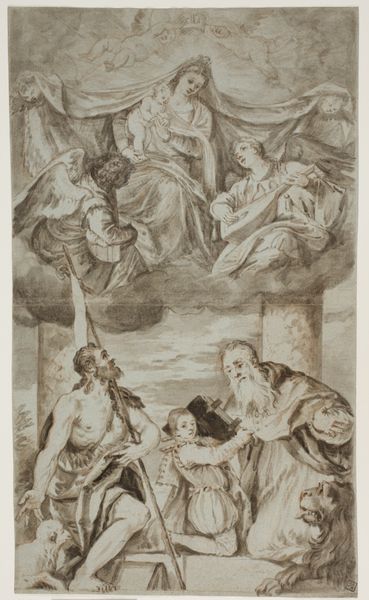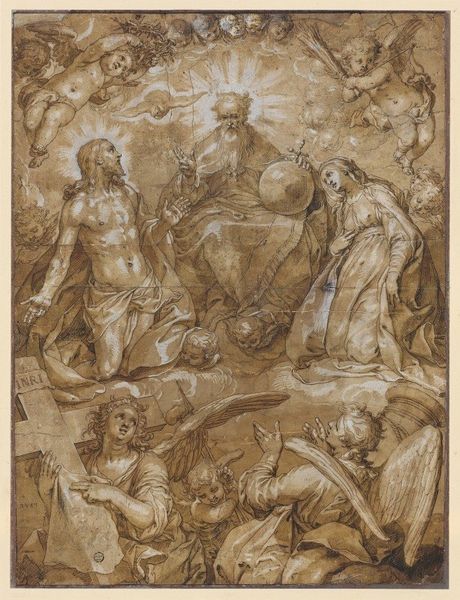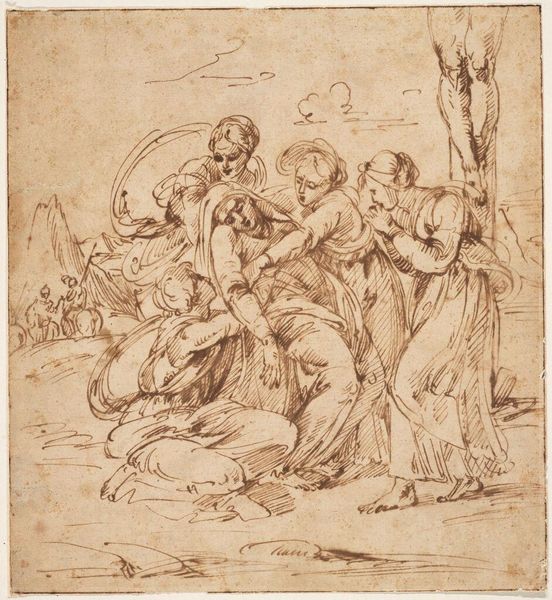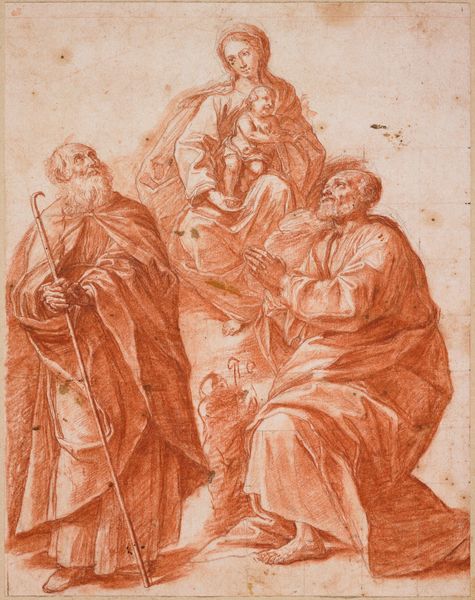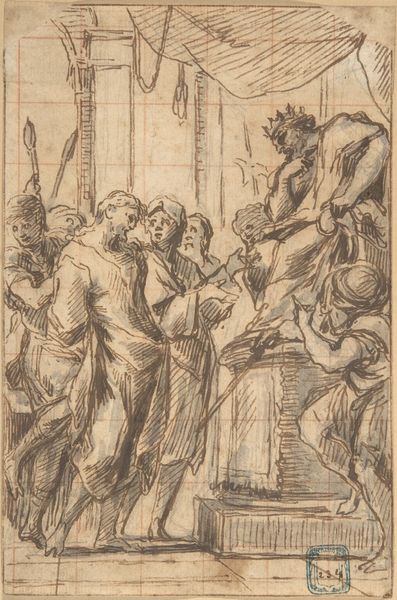
drawing, coloured-pencil, charcoal
#
drawing
#
coloured-pencil
#
narrative-art
#
charcoal drawing
#
mannerism
#
figuration
#
coloured pencil
#
charcoal
#
history-painting
Copyright: Public Domain: Artvee
Curator: Abraham Bloemaert, around the 16th century, rendered this emotional scene of “Ecce Homo” with charcoal and colored pencil. Editor: It's interesting how Bloemaert used the contrast of light and shadow to emphasize Christ's suffering. There’s a stark theatricality, isn’t there? Almost staged. Curator: Indeed. The artwork depicts a key moment from the Passion, capturing a complex interplay of power, injustice, and spiritual resistance during the historical context of religious persecution. Note the figures surrounding Christ – they’re not merely bystanders, but symbols of a corrupt authority and blind obedience to oppressive structures. Editor: Yes, I see that. And beyond its narrative purpose, notice the swirling composition. The lines and shadows pull the eye in specific directions to highlight areas on Christ, making Him the undeniable focal point despite all the commotion of lines in the work overall. Curator: The figure pointing a finger highlights the violence towards a figure persecuted due to the sociopolitical climate in a way that mirrors contemporary society. Even in the passivity of the suffering figure, we recognize the importance of speaking truth to power, as Bloemaert emphasizes religious persecution within the piece itself. Editor: I appreciate that reading of it. Though to my eyes, the artistic elements on their own still communicate the essential pathos. The artist certainly chose his tools deliberately. Curator: Art possesses the transformative ability to question accepted narratives. Bloemaert forces the audience to face the brutal realities of systemic cruelty in the name of justice, even to the present day. Editor: Perhaps we're both right in how the elements combine. Whether it's the sociopolitical undertones that impact one viewer, or the stylistic elements of line and shadow that grab another, this work clearly possesses a fascinating degree of intentionality. Curator: Certainly, and it reminds us of the continuous need for awareness in moments of collective silence or complicity, too. Editor: Precisely. Thank you for elucidating these layers within Bloemaert’s rendering, prompting us to confront complex dynamics.
Comments
No comments
Be the first to comment and join the conversation on the ultimate creative platform.
